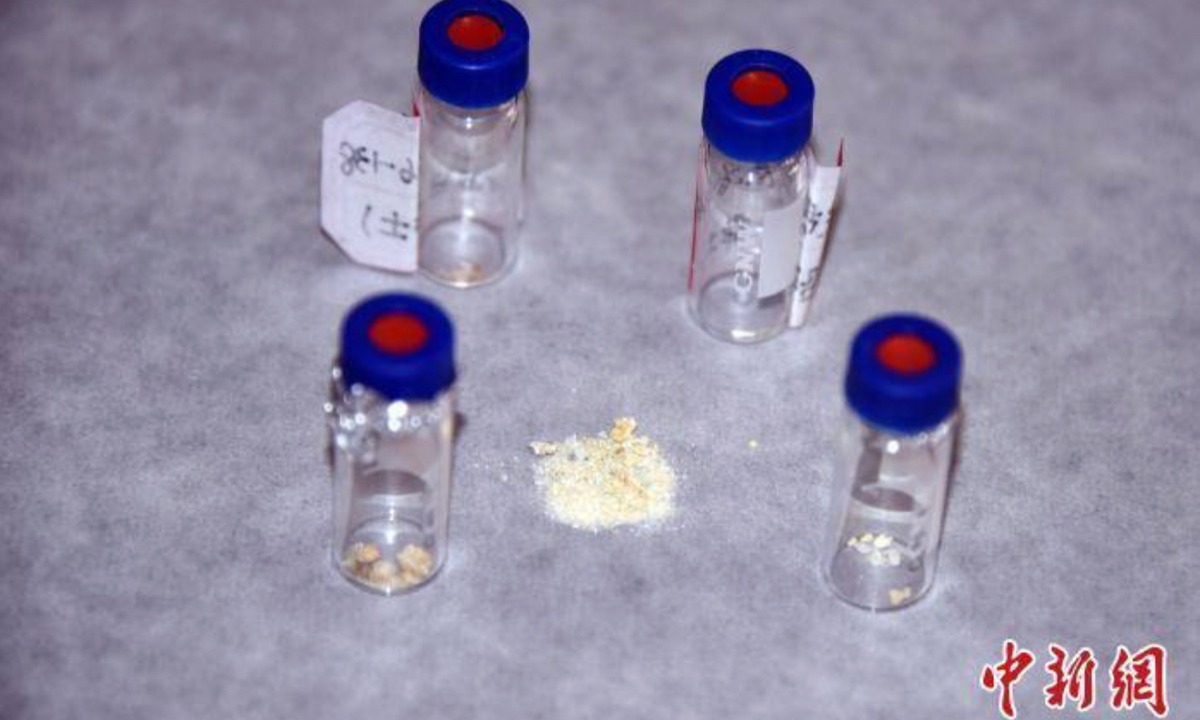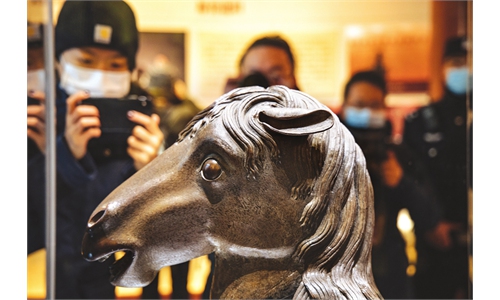ARTS / CULTURE & LEISURE
World’s earliest synthesized white lead cosmetics found in China

The remains of the world's earliest synthetic lead white cosmetics extracted from a bronze ware. Photo: Screenshot from China News Service website.
Chinese archaeologists' latest discovery in a tomb of a patrician living in the early Spring and Autumn Period (770BC-476 BC) proves that it was common for ancient Chinese to use synthetic lead-white makeup at that time, nearly 300 years earlier than in Europe and the Mediterranean region.
The discovery published in Humanities and Social Sciences Communications on Saturday consists of the remains of the world's earliest synthetic lead white cosmetics extracted from a bronze ware, these were excavated in a tomb in Northwest China's Shaanxi Province, as reported by China News Service.
White lead usually refers to liquid white lead, white lead, or a mixture of both and has been one of the most important ingredients of cosmetics since ancient times because of its skin whitening effect.
There are different views on the origin of synthetic lead white in China among international researchers, some of whom considered that the artificially synthetic white lead technology in China was not of local origin and may have been introduced from Europe or ancient Egypt, Han Bin, main researcher in the team and special research assistant of the University of Chinese Academy of Sciences (UCAS) said.
Han noted that the new discovery objected the view and confirmed the occurrence time of the synthetic white lead technology. At the same time, the discovery proves that since the early Spring and Autumn Period in China, both men and women pursued skin whitening.
Yang Yimin, a professor of the UCAS, added that exploring the origin of the technology means a lot to research on the development of ancient Chinese science and technology. The discovery further demonstrates that the Spring and Autumn Period was a developing stage of China's cosmetics industry and makeup was widely practiced.
During the research, Chinese archaeologists also found that Chinese ancient synthetic white lead technology used different methods from the European corrosion processing method, which reflects that ancient Chinese technology appeared nearly 300 years earlier than that of ancient Greece and that the two technologies have different origins.

